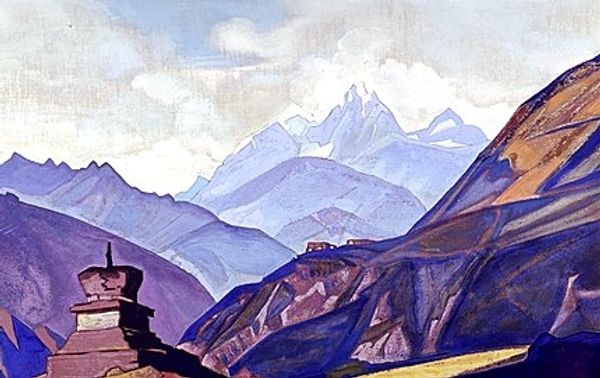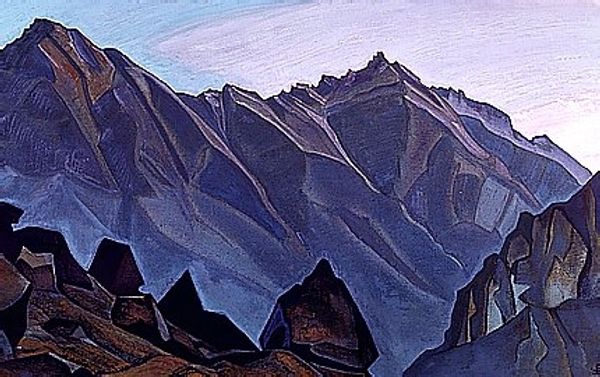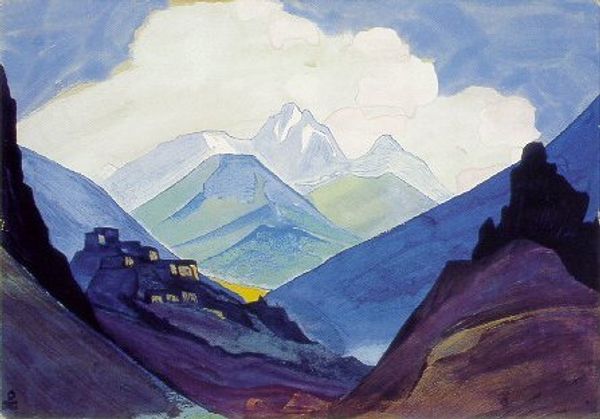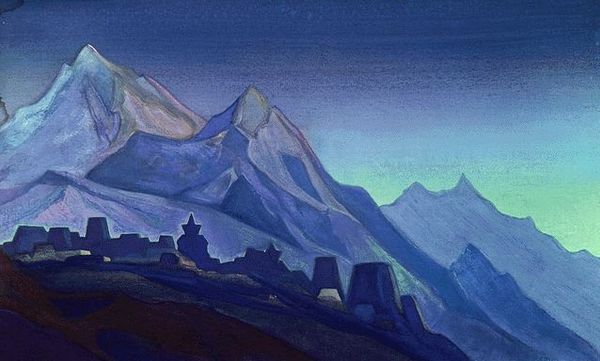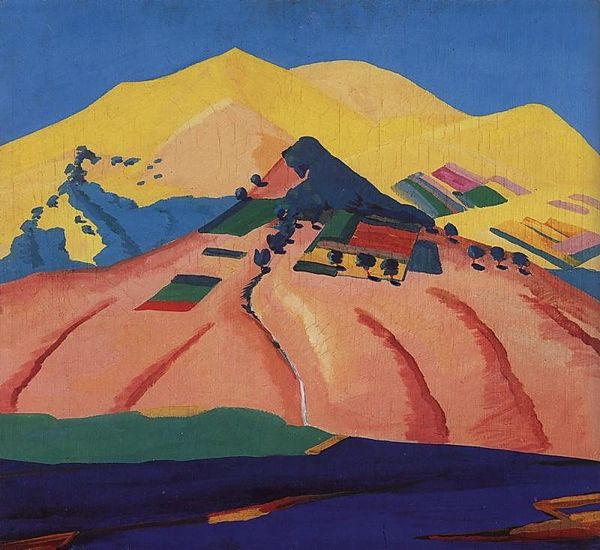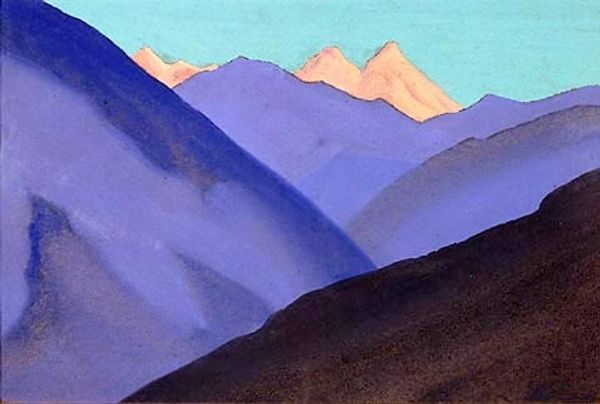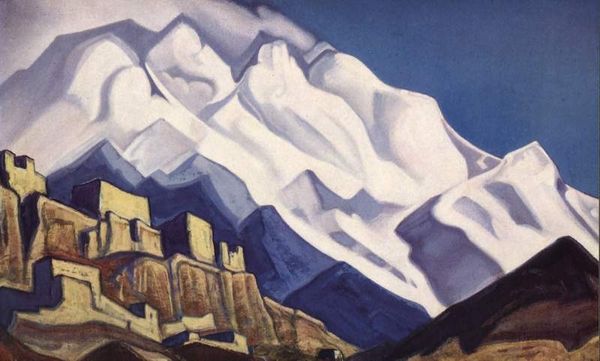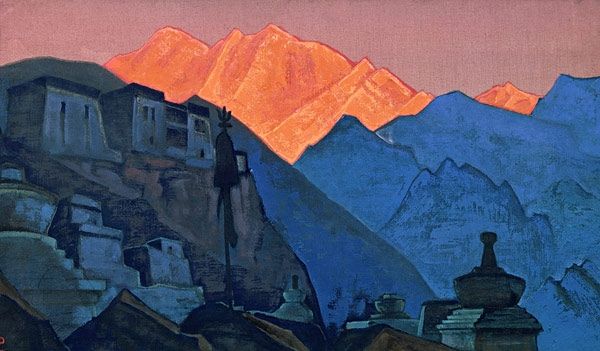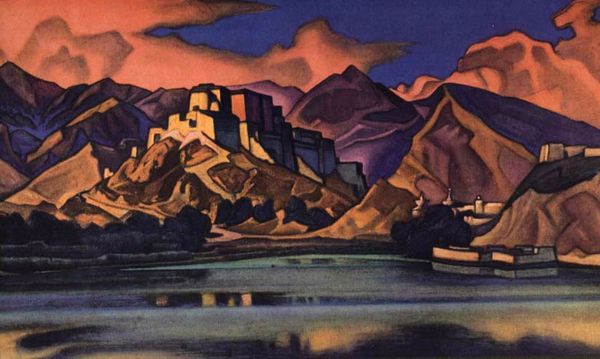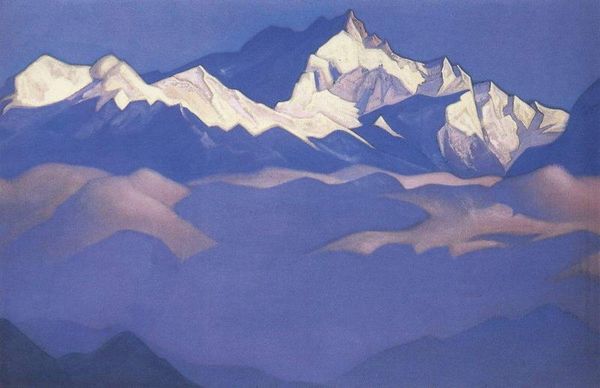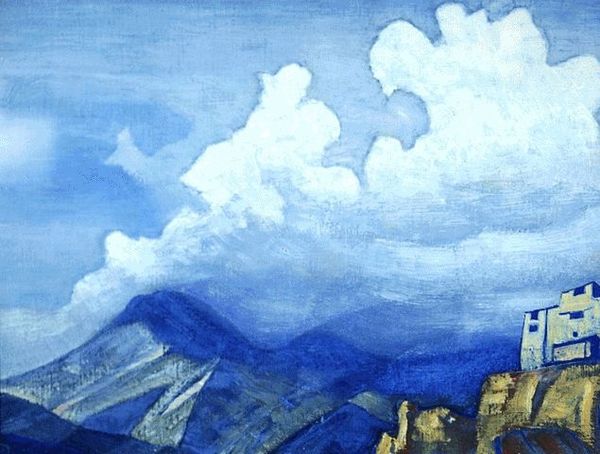
Copyright: Public domain
Nicholas Roerich made this painting of a Monastery in Himalayas with what looks like tempera, sometime in the first half of the 20th century. What strikes me most is how the whole picture plane is reduced to blue - mountains in blue, skies in blue - but it's the texture that gives the picture its magic. The paint is matte and dry-looking, creating a chalky effect. This gives the picture a tactile quality, like a fresco, or even dry pigment rubbed directly onto the canvas. Look at the mountain on the left. See the vertical striations? It’s as if Roerich applied the pigment with long, repetitive strokes of a dry brush. These subtle marks create a sense of depth and volume, while also reminding us of the physical act of painting. I wonder if the symbolic landscapes of someone like Marsden Hartley might have been on Roerich's mind when making this? In the end, art is all about interpretation, so maybe it's just blue mountains, who knows!
Comments
No comments
Be the first to comment and join the conversation on the ultimate creative platform.
